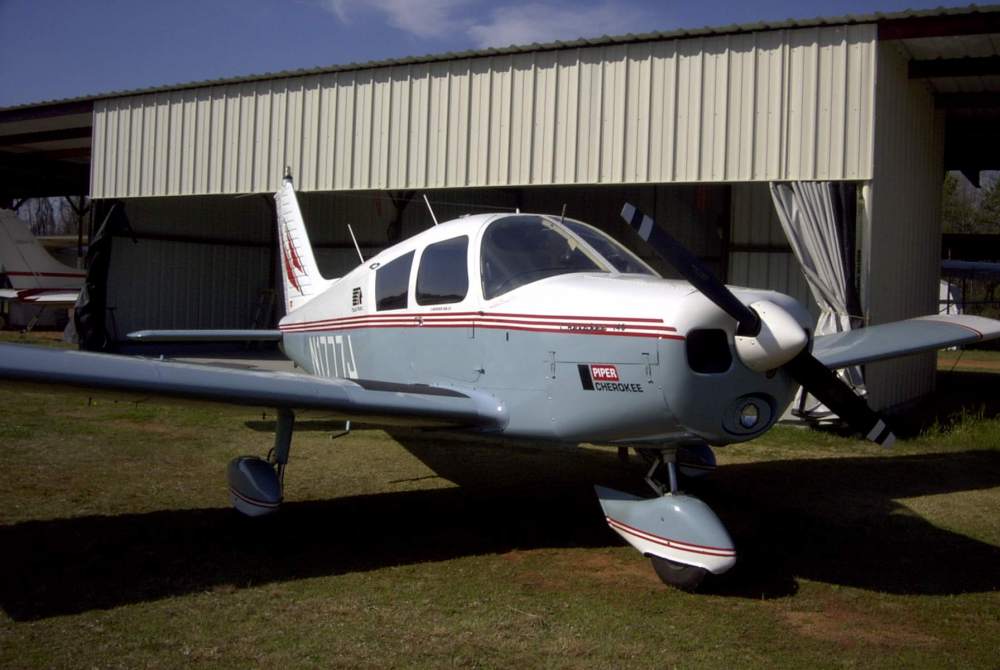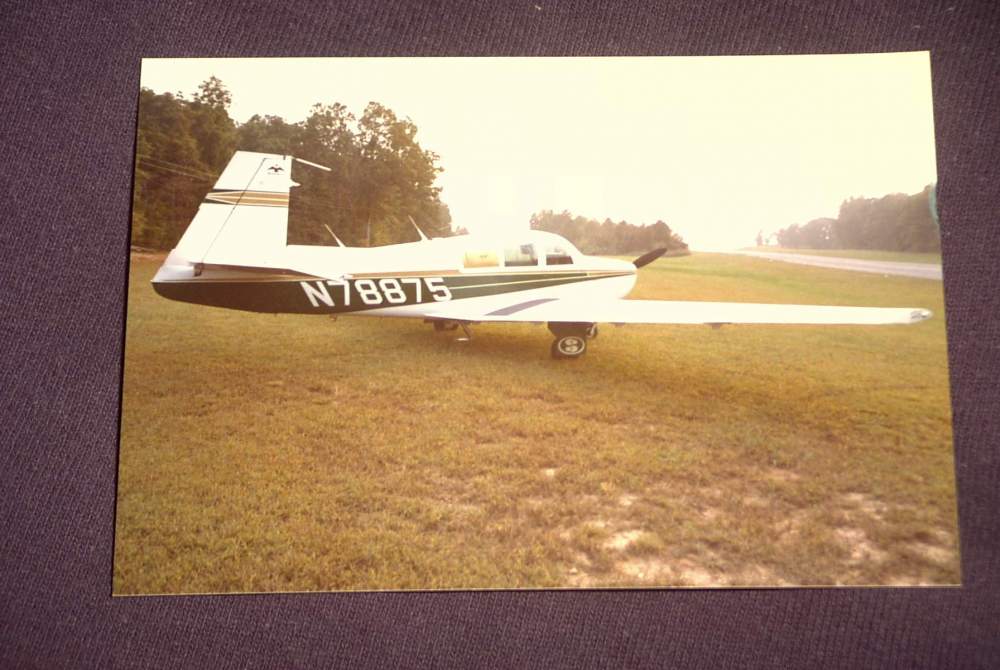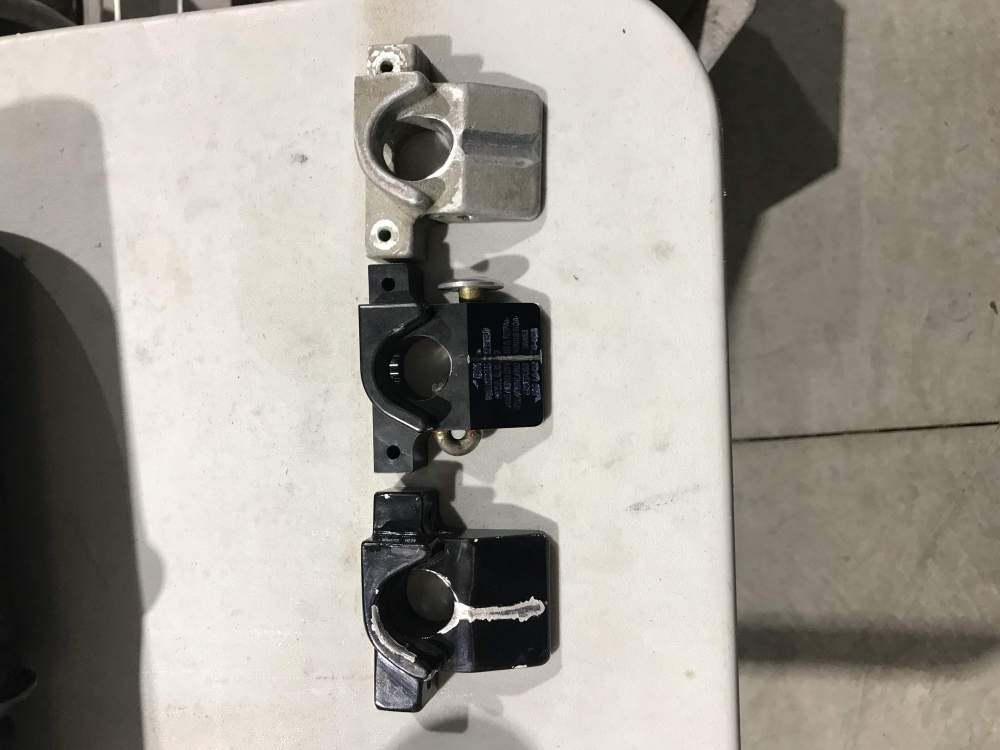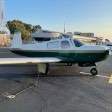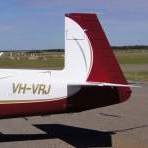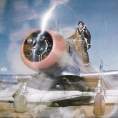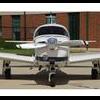Leaderboard
Popular Content
Showing content with the highest reputation on 01/24/2020 in all areas
-
I sold that mooney, but I do know the engine is still in service with ~1000 smoh, strong compressions and no issues.5 points
-
4 points
-
4 points
-
I'm old school, I'm still holding on to my 98 Dodge Ram because it has a 5 speed and you can't them any more. I have owned a 79 911 Turbo (wish I kept it), an 84 911 and 84 944, all GREAT cars. driver cars. I still marvel at watching Steve McQueen ring out that 68 390 Mustang during the Bullet chase seen as well as old clips of drivers in LeMans, Curious what an old school driver would perform against a new driver today with the various technological advancements. I guess the same could be said for piloting, old seat of the pants with minimal instruments vs. newer and safer technology. When I was in high school, the rich kids all drove Trans Ams, always wanted one especially after seeing "Smokey and the Bandit", couldn't afford one in the 70's so I drove a used Jeep CJ-7. I was in Denver about 4 years ago and stopped at a dealer that had a seal grey Carrara 4. I had been looking for one and stopped in to take a look. While looking at the Porsche, I noticed a black and gold TA in the garage, I asked what was the deal with it and they had just taken it in on a trade in on a Lambo (along with the Grey Porsche). I asked if they wanted to sell it and they didn't know much about it as they deal with exotics and euro sports. So I ended up with it, only play 70's music and still looking for platform shoes The toys in the hanger belong to my friend, however I di have a affinity for the l-29 as well.4 points
-
Back in the 80s I has a roommate with a Harley. We went out riding in the country one day. I was riding behind him and saw something fall off his bike and bounce out into a field. (Can you imagine parts falling off a Harley?) It was his shifter peddle. A few miles later he discovered it was missing, pulled over and was mad as hell! I told him I think I can find it. I saw it come off. He said I was nuts and didn't even want to go back and look. When we got home he parked the bike and didn't touch it for years. About 4 years later he had moved out and was living with his future wife. His birthday was coming up, so I thought "I remember where that thing is" I drove out to the country and stopped where I thought it was, I looked for about two minuets before I found it in the tall grass. It was a little dirty and a bit rusty, but perfectly serviceable. I put it in a nice box with a bow on it and brought it over for his B-day. He opened it and his jaw dropped! I said "I told you I knew where it was"4 points
-
Andrew, a lot of info is in Special Letter 92-1 and SB M20-252. You can get them both in one file here: http://www.mooney201.de/files/SL92-1_SN24_1686-2999.pdf For many of the later S/Ns there is also a check and possible modification of the rudder balance weight, and a change in the airspeed indicator.3 points
-
I was advised this evening by the airport manager that Wilgrove Airport in Charlotte is being sold, the property be developed with residential housing. Rats! I learned to fly at Wilgrove. Still have the back of a shirt that says something about 1st solo, January 7, 1977. Even though it was actually 1978. Bought half interest in a Cherokee 140 that same year, based it at Wilgrove. Got my private license in it also that same year on a Friday. Made my first business trip to Richmond two nights later. Flew the 140 a couple years, made a bunch of mistakes and learned a bunch of stuff. A full third of my hours were at night. Got an instrument rating. A frequent trip was Chesterfield County Airport near Richmond, now FCI, then it was W98. At the time, the only had an NDB approach. Flew it one time to Carlsbad, NM to visit Penny's parents. I joked that we got home, I slammed the door on that Cherokee, sold it and bought a Mooney. Pretty much the way it happened. Sold it to a guy in Morganton. For several years it was there. I asked Lynn Mace about it and he said he used to annual it, the owned later bought a Mooney. Easy to understand. I lived in the same house in Charlotte 41 years. Actually, it wasn't in Charlotte the first couple years, it gobbled us up soon enough. Charlotte kept growing, the city limits kept edging toward Wilgrove and finally annexed the property 5 years ago. We pay both county and city taxes here. When Wilgrove was annexed, taxes on the plane went up 50%. Same for the airport. Beginning of the end. Since this is Mooneyspace: The Mooney was a1965 M20C, 2075 TT, 900 SMOH. KX170B, MK12A, KT76, KN62 DME (had the mechanical indicator) and a KN74 RNAV. Hey, that was before LORAN, that was pretty fancy. Got my name on the waiting list for hangars. Year and a half later, got a shadeport hangar at Wilgrove. Lots more business trips at night. Coming home from Richmond one night, in and out of cloud at 6000, I hit a bird. Splattered on the prop, guts across the windshield. What the heck was he doing out on a night like that? Some personal trips too. I think 8 or 9 trips to NM. One year, mother-in-law had brain tumor surgery and we made three trips to NM that year. Gave one of our employees his first GA ride in that Mooney. Years later I was in Aurora, OR getting ready to take a tour at Vans Aircraft when Bill called to tell me he was taking flying lessons and just bought and airplane. There were other airplanes over the years, he died when his Baron hit the ground at high speed near the airport at Fayetteville. First electrical failure I had was in the dark, early one morning. I learned it was cheap to keep a fresh battery in an airplane. Mooney, whatever possessed me to sell it? But I did and bought a F33A Bonanza. By this time, I was VP in our company. Had offices in NC, SC and VA. I worked with our field sales guys on a regular basis, meeting them at 7 or 7:30 in the morning and wearing them out all day. Frequently it was dark, going and coming. Eventually we had sales people in GA, WV and MD. Then the company was sold. It took the new owners four years to turn a money making operation into a smoking hole in the ground. Just before that happened, I had enough and told one of our vendors I needed a place to work for a while. They gave me a job as a regional sales manager selling hydraulic cylinders. 14 States. Every Monday morning, got in the plane instead of the truck and went to Memphis, Jackson, Tampa, Pittsburgh, Mobile, Allentown, etc. I was happier than a mule eating briers. I would fly out of Wilgrove early enough to pick up a rental car before 8. Another few dozen trips to NM, a few to Bahamas, a dozen to Canada, fishing. Poured a concrete floor in the shadeport. Went through several engines, paint jobs and a couple interiors. About 10 pressure pump failures, a mix of alternator and regulators and one engine failure (NewYorkapproach,114ploutof11for7withanalternatorfailure,requestingimmediateturnforAllentownILSrunway6). Ah, good times. Landing on an unplowed runway at Wilgrove. Windy, rain, at night. It surprises me how lousy the weather could be but still flyable VFR. 24 years, 5300 hours, all out of Wilgrove. Ever been scared to look at something one last time? I walked directly away to the rental counter in Jackson, MS and wouldn't look toward the Mercury Aviation ramp. Somewhere in the middle of Bonanza ownership, a guy at Wilgrove asked if I was the David Lloyd that owned the Cherokee 140 he just bought. Yep. We walked down to his hangar to look it over. It was in the same hangar I had the Mooney in. With the Bonanza I had ratcheted up the row of hangars to the one beside the office. I'm still there for the next 90 days. Gary sold the 140 last year. The airport manager usually had a cookout in the spring, another in the fall. Live music by one of the hangar guys, a professional jazz musician. The first airport function I remember, I met and talked to a young corporate pilot. Monday evening when I walked in the front door, Steve's photo was on television. Hit a powerline while busting minimums. First of too many. Retirement was approaching and everything on the Bonanza was old and worn so it was sold. Started building the RV7 as a retirement project. Penny said I better hang on to that hangar. Final assembly, pink slip and first flight from Wilgrove. Glad I kept the hangar. One day a friend asked why some hangars were enclosed but not mine. Well, you can't get a building permit, the county is trying to choke off any development here. He said we could measure it up, order some steel and sheet and do it. We did. Not pretty, but serviceable. Went back to work for 9 months, going to see all the old customers. IFR in an RV tended to be kind of … sporty. Pittsburgh, Louisville, Chattanooga, Huntington, Monroeville. Flew it to NM once to see Penny's brothers. 9 Years, 475 hours, good times but time to move on. Sold the RV and bought a Mooney the same day in Indiana. Flew home to Wilgrove. Charts used to say 3000 feet. I've also seen 27 and 2800. With obstacles and displaced thresholds. Don't know what the book says now. It ain't real generous. I have always told students of the flight school, learn to land here and you can go anywhere. Learn somewhere else and you might not come here. First Mooney landing, final approach at 70 MPH, full flaps, looked like I knew what I was doing. Turned around on the runway about halfway down. That certainly is satisfying. Back in the fall, the cookout and the rain date were both rained out. Steve, Bill, Sam, Troy, Melvin, Bob and several others, all gone. Edit: Gotta add in a few more names. Helen, Hank and Richard. Stoke, cancer and old age tend to get most of us. Still, there are always new faces with the flight school and people buying and selling, needing a hangar or leaving. Guess there won't be many more new memories. There were some sad times, but a lot of good times. I'm gonna miss that place. Rats! I've got my name on hangar lists at a couple airports. The lists are longer than the time I have left. Don't know what to do. I have a Bruce cover but that is temporary. I suspect lack of a hangar will speed my flying retirement. Note the 114PL on the Bo (Penny's bday is 11/14), 224PL on the RV. Was going to change EB to PL. Don't know now.2 points
-
Just in case we have a few younger pilots that aren't familiar with the bandit:2 points
-
While the gears in the Dukes actuator are critical, you could probably make these blocks out of oak and be in pretty good shape. Not to mention it gets inspected every time you use it. When doing a failure analysis, detection of failure is important, with it right in front of you, detection of failure is very high.2 points
-
Definitely not overthinking the alloy. This part must be the equivalent of the original. We can’t guess at the alloy to comply with the rules. I have had to use a lab near me to determine the alloy in the past and can do the same with this part. David2 points
-
I think you are making this too hard To quote 21.601 (1) A TSO issued by the FAA is a minimum performance standard for specified articles used on civil aircraft; Part 91 specifies which equipment is required to meet specific TSOs. Examples are GPS navigators and transponders. There is no such regulatory requirement for a clock. If you have anything mounted in your panel that will continuously display time in hours, minutes, and seconds, you’re good. Skip2 points
-
2 points
-
I think I may have some 8-track tapes somewhere in the attic, if you need them.2 points
-
2 points
-
Terminology seems to be the culprit here.................. I stand corrected then...............my squat switch [which I've mistakenly labeled it for years and years..lol ] is an airspeed safety switch, created by Mooney. Below is an article of interest I discovered: IT'S ALL SOOOOOOOOOOOOOOO CLEAR TO ME NOW ! Gear up, rotate – No, wait! Electric gear safety system ShopTalk January 2019 In this month’s ShopTalk, we will dig into the issue of troubleshooting and repair of the electric landing gear safety system in your Mooney aircraft. You may not know this, but a new landing gear airspeed safety switch will cost you over $1,100 plus labor. First a little history. When Mooney first developed the retractable gear system in the 1950s for the new M20 series, there was no electric system available. A Johnson bar was attached to the main retraction assembly and an aluminum block was mounted on the airframe at the base of the instrument panel in the centered position. This aluminum block originally only had a hole cut into the base where the spring-loaded handle on the end of the Johnson bar would sit in when the gear was down and locked. After a few gear collapse events, Mooney added a lock pin to the aluminum block and put a slot on the spring-loaded handle to accept the lock pin once the handle was inserted into the down-lock block. The first electric gear Mooney did not show up until 1966 as an option but many manual gear Mooneys have been converted over to electric gear. This article will not go into all the different electric gear systems Mooney has used over the last 52 years. We will concentrate only on the gear safety switch. The current Mooney safety switch is different from most general aviation aircraft safety squat switches. Most GA planes have oleo struts (pneumatic air–oil hydraulic shock absorber) with a gear safety switch mounted on one of the struts. As the plane gets lighter during takeoff, the strut extends, the squat switch closes that part of the electric gear circuit, allowing the gear handle switch, when the gear handle is placed in the up position, to complete the circuit and retract the gear. The Mooney landing gear doesn’t have oleo struts but rather a rubber shock disc. Therefore, the degree of vertical travel as the weight is removed from the wheels is much less. This would be a problem for a squat switch as the adjustment would be very critical. Mooney discovered this as some airplanes in the late 1960s and early 1970s had a squat switch on the left gear. So, Mooney came up with an airspeed safety switch that is directly inline on the pitot system and vented into the static system. There were two different early style airspeed switch assemblies, but later models now use the type shown, usually mounted to the back of the airspeed indicator (see Figure 1). Early J and K airplanes did not use CPC (Circular Plastic Connector) fittings on the wires coming out of the safety switch making it possible to incorrectly connect the circuit. Later models, adopting CPC fittings helped to eliminate wiring errors, even though the connectors may appear to be identical but one side has pins inside and the other has sockets. At sufficient airspeed (approximately 60 knots), pitot pressure acting on a diaphragm enclosed in the gold colored housing (see Figure 2), closes the microswitch for the gear circuit. Now, when the gear handle is placed in the up position, the gear motor is energized for retraction. The airspeed switch is very robust and relatively simple when one looks inside the switch assembly. The gold colored housing is sealed with an O-ring. This airspeed switch assembly typically has two micro switches (see Figure 3). Mooney did make some assemblies with only one switch A cellophane-like diaphragm is located inside with a metal disc that pushes against a button that protrudes out to activate the microswitch(es). The other CPC connector and microswitch may be used to activate an in-flight timer on some clock systems. That is why when you look up under the instrument panel on an M20J or newer planes one of these CPC connectors is typically not used. If the main microswitch fails and no timer is connected, the secondary microswitch may be rewired and utilized for gear safety. After 1977, a gear bypass button was installed to allow gear retraction without airspeed, mostly utilized for retraction when the airplane is on jacks. Without the bypass, for testing, one must blow into the pitot tube to simulate the airspeed above 60 knots to activate the safety switch. Any obstruction or contaminants such as oil or water in the pitot or vent (static) will affect the operation of the diaphragm. The switches have adjustable pads where they mount to the case and using an ohmmeter and carefully pressurizing (blowing into) the pitot tube while watching the airspeed indicator, one can tell just what speed is needed to activate the switches. There are drawbacks to both squat switch and airspeed switch systems. The squat switch is out in the left wheel well and is subjected to all the dirt, water and other debris that is flung up into the wheel well. If your plane is stripped and repainted, this can also affect squat switch operation. Additionally, because the gear discs are rubber, if they don’t expand properly after takeoff, the squat switch will not close allowing the gear to retract, (think: parked outside in the cold, day after day). Of course, the airspeed safety switch has its drawbacks also. Any blockage in the pitot or static line can affect its proper operation (think: spring-time bugs looking to nest in your pitot line). Because the switch assembly is in the cabin, it is in a much friendlier environment, but when the mechanic pulls your airspeed indicator for overhaul, when re-installed, if the switch wires are misconnected, the gear won’t work. All in all, I think both systems are very reliable. So, when you are troubleshooting a landing gear problem and suspect the airspeed switch is the culprit, don’t be afraid to take it apart. At 1,100 bucks for a replacement, you can afford to spend an hour or two verifying the switch is actually FUBAR. As with this or any other ShopTalk article, if you have questions, feel free to e-mail me, shoptalk@knr-inc,com or call me at my aircraft repair shop, 307-789-6866. Until the next ShopTalk, enjoy flying your Mooney! © 2016 KNR, Inc.2 points
-
Thanks Paul - that's a great tip. Always uncomfortable when you've never heard about it before. (MAPA Logs are good that way for keeping us up to date with Mooney SBs). If only - proud HP32 user for 28 years now. And it's only on its second battery. Don't make em like they used to2 points
-
Oh yes, I see that now. Yuck!! I’m SBP or SMX if you find yourself on the central coast of California for a lunch break. Safe travels.1 point
-
That could work, I’ll let you know. I’m in Facebook jail so won’t be able to post or reply to anything there. Get some rest and feel better soon! Sent from my iPhone using Tapatalk1 point
-
Agree that testing the pucks is worthy. Could still be sticking switches. The “gunk” in the switches seemed to get worse with cold in my case. Really it’s either pucks or switches. Cleaning the switches is real easy, especially while it’s up on jacks having the pucks tested. BTW, this problem likely won’t replicate in your A&Ps heated hanger.1 point
-
I think all the airframe manufacturers used to have folks who knew the government folks really well, and could grease the certification gears with simple people know how. Manufacturers seem to have had a much easier time coming out with many different airframes back in the day. I think what changed that was the litigation storm of the 80's. They all stopped making airplanes for about a decade. I imagine the older workers who knew the FAA folks retired or moved on, and the newer workers who replaced them didn't establish those relationships. Indeed, they probably had no idea that such relationships existed. The culture as changed and has remained so.1 point
-
I would call around to our repair partners SEA, and Duncan would be the other calls I would make. https://www.bendixking.com/en/pages/repair-partners I would be interested to see the quote you get from them. Cheers, Steve1 point
-
Money sent. That goal was meet fast!1 point
-
Assuming you have a King A/P and electric trim, I would do the following: Power up the avionics. (Start plane or not - you and your battery's choice). Cycle trim switch on panel (as you have done). Reset breaker on panel. Run A/P test and note light flashes and beeps. The KFC/KAP test cycle checks all components of the A/P including the electric trim. There actually is a method to the number of light flashes and beeps. If it is not what you normally see/hear, it can help lead to the failing component. If it is a King A/P, there should also be a section in the Supplement for it discussing the test of the autopilot you are doing before you fly. In my supplement, it is Section IV - Normal Procedures, Pre-flight. It covers the A/P test and testing the manual electric trim. If you have something other than a KFC/KAP, I am pretty sure none of this helps.1 point
-
@carusoam Very true! I rented an M20B for several years before buying my F; I got a good rate, just over $1000, my first year of ownership1 point
-
So over the last few oil changes, putting in 100w into the rocket, which takes 13 quarts after draining.... I started to wonder how much oil is left in the containers afterwords. I try to let them sit inverted in the oil neck for a few min, but with 13 quarts to add that gets REALLY tedious. So, The last oil change, I emptied the quart containers and only let them sit for about 20 seconds inverted after they were "empty" and then capped them and kept them. I then brought them home and started consolidating them slowly giving the oil more time to run out. I then capped the empty containers and let them sit upside down for a few days. I came back and started consolidating again. Well, It appears that just a bit less than 1/2 quart is left behind in the 13 containers. There, now for all of you that have the same sick curiosities that I do, mystery solved! Now that I know, for all this extra effort, I can now save on 100 bucks in oil every 26 oil changes!1 point
-
1 point
-
If we can determine the alloy for the original part we can certainly come up with an improved alternate. If we can’t find documentation to determine original alloy then we’ll need to have it tested (chemical composition, hardness, conductivity). I may be able to help if it comes to that Sent from my iPhone using Tapatalk1 point
-
Awesome group. I will get the parts to the shop tomorrow for the drawings. I’ll also contact via e-mail and we’ll take care of the funds after I provide the drawings. Shouldn’t take too long. Thank you, David1 point
-
1 point
-
That would earn him his Lifetime CB Platinum Elite card.1 point
-
Town will shut down 81-year-old airport it bought for $2.3M By Rob Jennings | NJ Advance Media for NJ.com Updated Jan 19, 2020; Posted Jan 19, 2020. The township’s governing committee has voted to close Trinca Airport, which the Sussex County municipality bought for $2.28 million 18 years ago, and continues to review possible future uses for the 121-acre site, officials said Friday. Pilots who sought to save the airport are expressing dismay at the impending shutdown. “It’s a little piece of history that’s going to disappear,” said Damian DelGaizo, owner of the nearby Andover Flight Academy. The Green Township Committee began holding public discussions on the airport’s future in 2018, about a year after the pilot of an amateur-built aircraft was killed in a crash at the end of the runway. It voted 5-0 to close it, effective Sept. 1, at a meeting four months ago. Green Mayor Margaret Phillips, who serves on the committee, said financial and safety considerations drove the decision. “We understand the history and nostalgia that goes along with that property. That doesn’t help our tax base,” Phillips told NJ Advance Media. Phillips said Green Township receives zero revenues from Trinca Airport, which is one of 42 public-use airports in New Jersey and does not charge for flying in or out. Annual expenses are $15,000, including approximately $6,000 for a part-time airport manager and maintenance, such as cutting grass on the turf runway. While tie-downs are available for any pilot wishing to store their plane - there used to be a hangar, but it was removed in 2009 - the airport does not offer fuel and it has been at least several years since anyone rented an anchor, Phillips said. A bigger financial concern is the “unknown future cost to taxpayers,” Phillips said, such as the Federal Aviation Administration (FAA) or Department of Homeland Security ordering improvements. “The expense to make-over the airport would be huge. There’s no water or septic. There’s nothing there,” Phillips said, adding that the lone building services mostly as a storage shed. However, the airport property is potentially lucrative to Green Township, though Phillips said municipal officials are not considering selling any of the three lots making up the 121 acres. Asked about options, Phillips said one company has expressed interest in leasing land and installing solar panels, while others have proposed a medicinal marijuana facility. “There is nothing definitive about that property. The only thing that is definitive is, the town committee wanted to close the airport,” Phillips said. DelGaizo said the airport is used by flight schools, since learning how to land on a soft field is among the requirements in getting a pilot’s license. It is also popular among pilots of antique planes, such as World War II-era Piper Cubs, that “fare better on grass,” he added. He said that, even before the airport opened in 1939, it was used unofficially by air mail pilots. “It really is a shame,” DelGaizo said of losing the airport. Trinca Airport long has been a source of debate and discussion in Green Township, a rural municipality that is home to 3,400. It was under private ownership in the 1990s when residents opposed a proposal to pave and expand the runway in order to attract corporate jets and even commercial aircraft. After the N.J. Department of Transportation blocked the proposal, the owner sought to close the airport and build 225 houses, including 21 that would have been set aside for low-income families. Green Township headed off that possibility by buying the airport in 2002, for $2.28 million. The New Jersey Aviation Association, which supported the failed expansion in the 1990s and testified last year in opposition to closing the airport, expressed regret at the outcome Friday. “Green Township as the owner of this public-use airport has the right to close the airport. It is unfortunate though for general aviation that this basic and historic transport facility in New Jersey will close,” said the association’s executive director, Suzanne Solberg Nagle. Nagle said that public-use airports in New Jersey declined from 82 in 1950, to 42 last year and that the remaining airports deserve additional funding from the state’s Transportation Trust Fund. A public use airport is an airport available for use by the general public without a requirement for prior approval of the airport owner or operator, she explained. Nagle said that the state DOT has authority over public-use airports and that the commissioner “should exercise this authority when necessary to preserve airports and meet the needs of 21st century aviation.” The runway at Trinca Airport is open from sunrise to sunset, seven days per week. It is among at least seven public-use airports in New Jersey with turf runways that remain in use, Nagle said. When it is snowing, as was the case on Saturday, pilots typically use skis with their landing gear, the mayor said. The airport’s entrance was gated around 1 p.m. Friday and no planes were in sight. The part-time airport manager was not in. Asked about the decision to delay the airport’s closure until Sept. 1, Phillips said that was the earliest it could be shut down without requiring the township to repay a portion of the state grant it received in 2010 to study airport improvements. “That’s why we have delayed the closing,” she said. DelGaizo said he is looking forward to a final summer at the airport. “I’ll use it right up until the day it closes,” he said.1 point
-
The thread you seek. More importantly what is the best price on discs?1 point
-
What an interesting thread! GeeBee and StevenL757 your insights go right along with mine. I too have flown both the 73 and the 75 (ck airman on both, BUT my 73 time is in steam gauges and not TV screens:-) Robert Buck was right on with his comment. My history goes back to the days of Bob Six at CAL (who I met during my time there), and Maytag at National and Eddie Rickyback at Eastern and other of the like. These men were Titans in the airline business then. With them it was personal and their reputations went with the performance of the airline. Then the "suits" came in (as we called them) and had their compensation delivered on quarterly profits. Two years of good quarters and they were gone to other conquests. At least that's the way it seemed to those in the trenches. 75? Best performing "big" airplane I ever flew. Favorite airplane? 727 by far. Longest flight (air time) in the 737-300 5+17 MCI to SFO. Flew a 727 with 8+30 range at one time. Once did the Loop Departure from LAX in a 757-200 on a ferry to LAS and from pushing them fwd for T/O to level at 12,000' was 2 mins+56 seconds. That included the ground roll! Early Lear 20 series held a record to 41,000 of 7 mins and 30 seconds IIRC, been a lot of years since I flew them but we went to 41 as a regular operation to get fuel burns down for range, ol' man Lear used to go a lot higher (and not tell anyone-no alt reporting xponders then) IF he could keep the engines running, They had to be trimmed just perfect to keep the fires lit way up there. I agree that customer base and fuel economics drove Boeing to use the new engine (or try to) A different pipeline for support of a different variant is very costly. Training and schedules becomes a big headache as each different airplane is added to the fleet (think of all the different planes Eastern was flying when it went under). That wasn't the only problem at Eastern but it was a big contributor. Their biggest failure was in not telling the crews of the new trim system and having a single point of failure for it. Now it may be grounded until this summer. Their reputation may never recover. If one remembers, they took a slight hit in rep way back when they did the wing break test on the 787, First time Boeing ever failed that test , it failed about 1.5% below engineering predictions. The feds allowed them to strengthen without a retest to meet requirements. There had been stories and rumors for several years about the production quality coming down the production line. So I don't think the MAX failure was the start of Boeing's recent years problems. Suits may well have played a part. Maybe a new CEO and section heads might be able to correct their path. Have a rating in the 'bus also. I'll still go Boeing when possible.1 point
-
Something changed as the Long Body evolved... The first LB, M20L (PFM), has a weight limit based on its legs and feet... The next LB, got new legs... M20M. They are beautiful... PP thoughts only, not a mechanic or a leg man... maybe a LM... Best regards, -a-1 point
-
I'm in, a little north of the $22.221 point
-
Then why all the big car companies now scrambling to try to come up with a competitive EV offering? Either you must have a very short lifetime on your horizon, or you have a Mustang in your future As well as the Internal combustion engine has been developed, it will never be as efficient as an electric motor. Certified air cooled internal combustion engines are the work of the devil and regulated by the FAA. What could possibly go wrong? With the advent of dry cell lithium tech and other battery tech on the horizon, energy density increases, we are not far away at all to complete disruption in not only the auto industry, but transportation in general.1 point
-
Thanks OHAEDO. That is fantastic news. If they eventually return to full production, I hope they give top priority to their marketing/sales department and allow staff who are smart and passionate free to do their job.1 point
-
You may remember Captain Robert Buck, famed author of Weather Flying and other great books. He was once asked by a reporter what is the greatest threat to air safety. Without missing a beat he answered, "The Harvard MBA".1 point
-
FTFY! It's more difficult than Peter Piper picking a peck of pickled peppers [who grows peppers already pickled? Wish I could!] We've been having discussions here at work with some recently-arrived coworkers from facilities outside the US, revolving around textbook vs. Southern English, and what the words mean [when they can figure out what the words are]. Fun times. Cue Lewis Grizzard: https://youtu.be/imZjCbRuZ3c1 point
-
Snip an air hole in the top of the quart oil container as you pour it in (if you thread it on). Goes much faster and leaves less behind.1 point
-
I spent my working career in tech. There are open systems and closed systems. For example: PCs are open, Mac is closed. Android is open, iPhone is closed, Aspen is open, Garmin is (mostly) closed. A closed system gives the company complete control over the technology and pricing. An open system forces the company to innovate and add value because it cannot build technical or legal barriers to competition. I’ve built both. Open systems are more challenging to design because you have to work with everything. Closed systems are good for stockholders; open systems are good for consumers. Do you think Garmin would be introducing new products as often if there were not competition from open system companies? Why would they? Look how long they rode the GNS because there wasn’t real competition. I would expect a few hiccups with something as complicated at the Aspen PFD. It looks deceptively simple to a pilot operating the user interface. But take a look at the installation manual and see all the configurations necessary to make it work with all the current and legacy equipment it works with. And think of the test matrix necessary every time something changes. Then remember the fundamental rule of engineering that there is no such thing as a single change. As someone who has built a lot of complicated stuff, I’m amazed by what Aspen has accomplished. By the way, I just got a service bulletin from Garmin for my brand new GTX 345 for new software to prevent it from failing to display some ADS-B traffic. So everyone has issues. My considered advice is to go Garmin if you are extremely risk adverse. If you want maximum flexibility now and in the unknowable future, go with open system providers. Skip1 point
-
1 point
-
That's true. The O/H on my motor was all new except the cylinders: I had them overhauled as they were first run with only 350 hrs on them. Again another risk.1 point



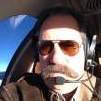
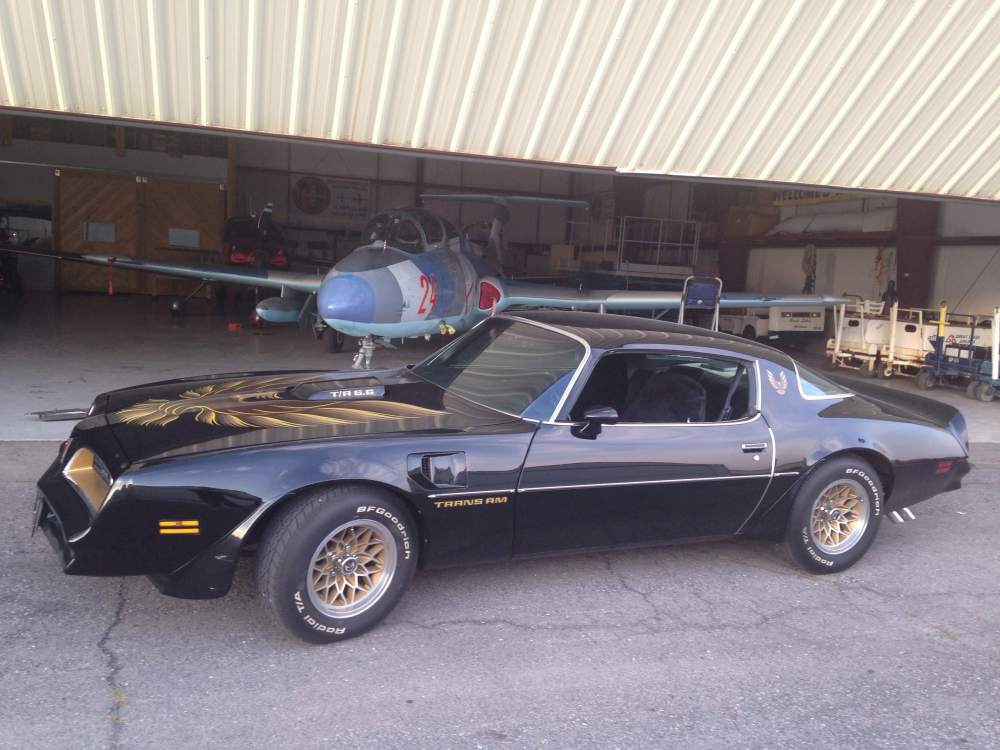

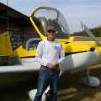
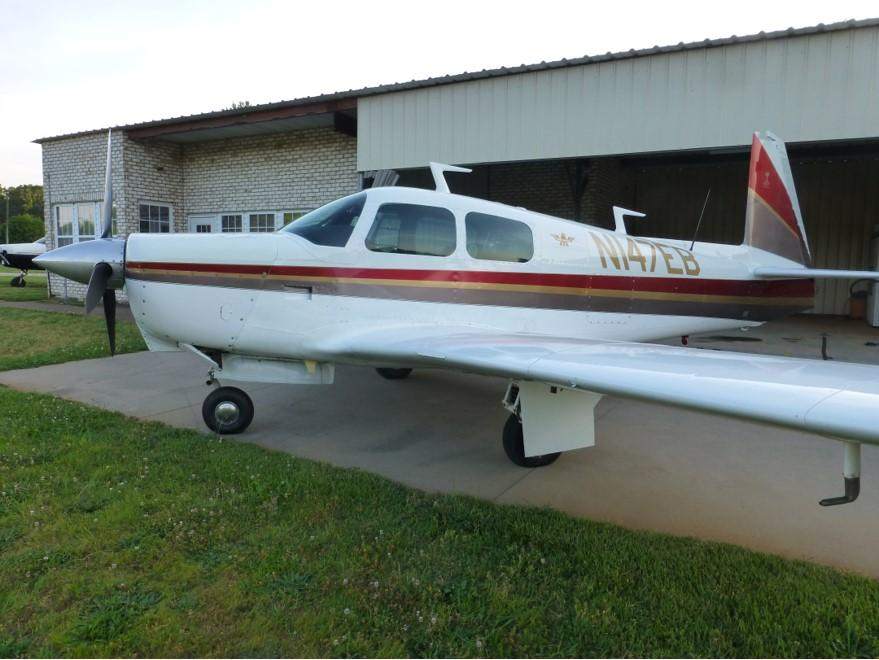
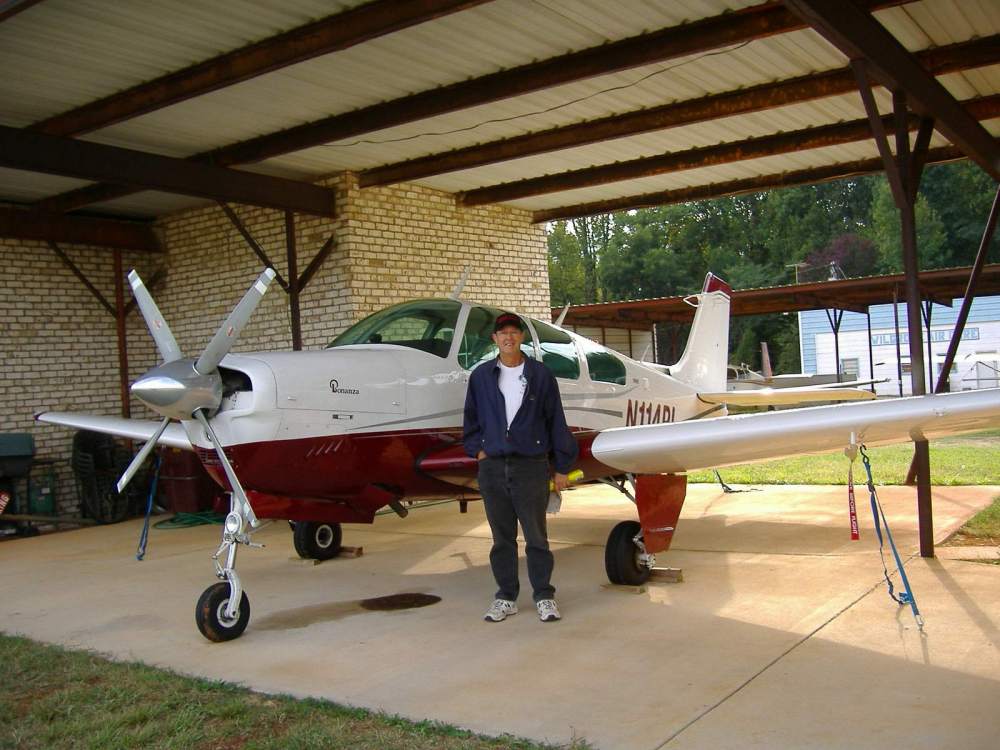
.thumb.jpg.dba3b67022de6147946b261114d2fc65.jpg)
